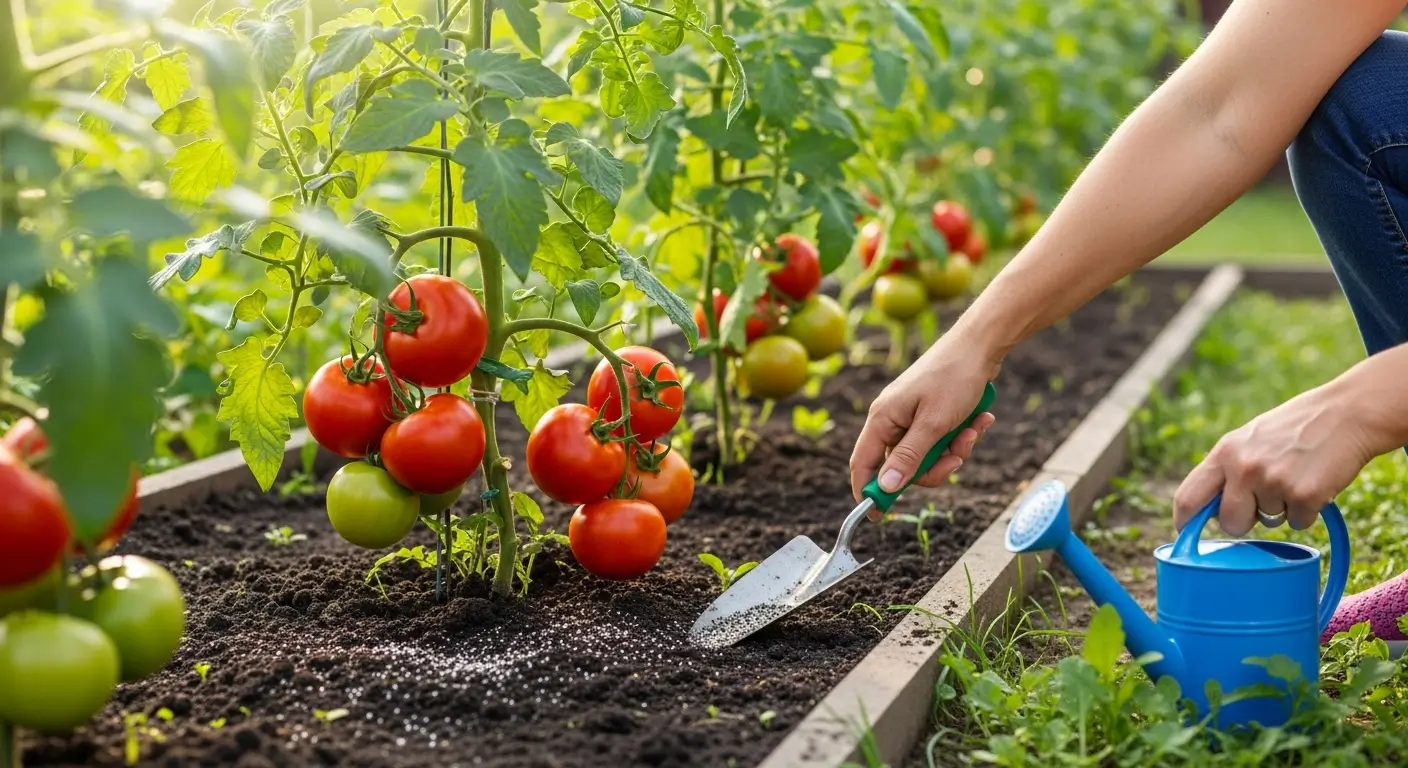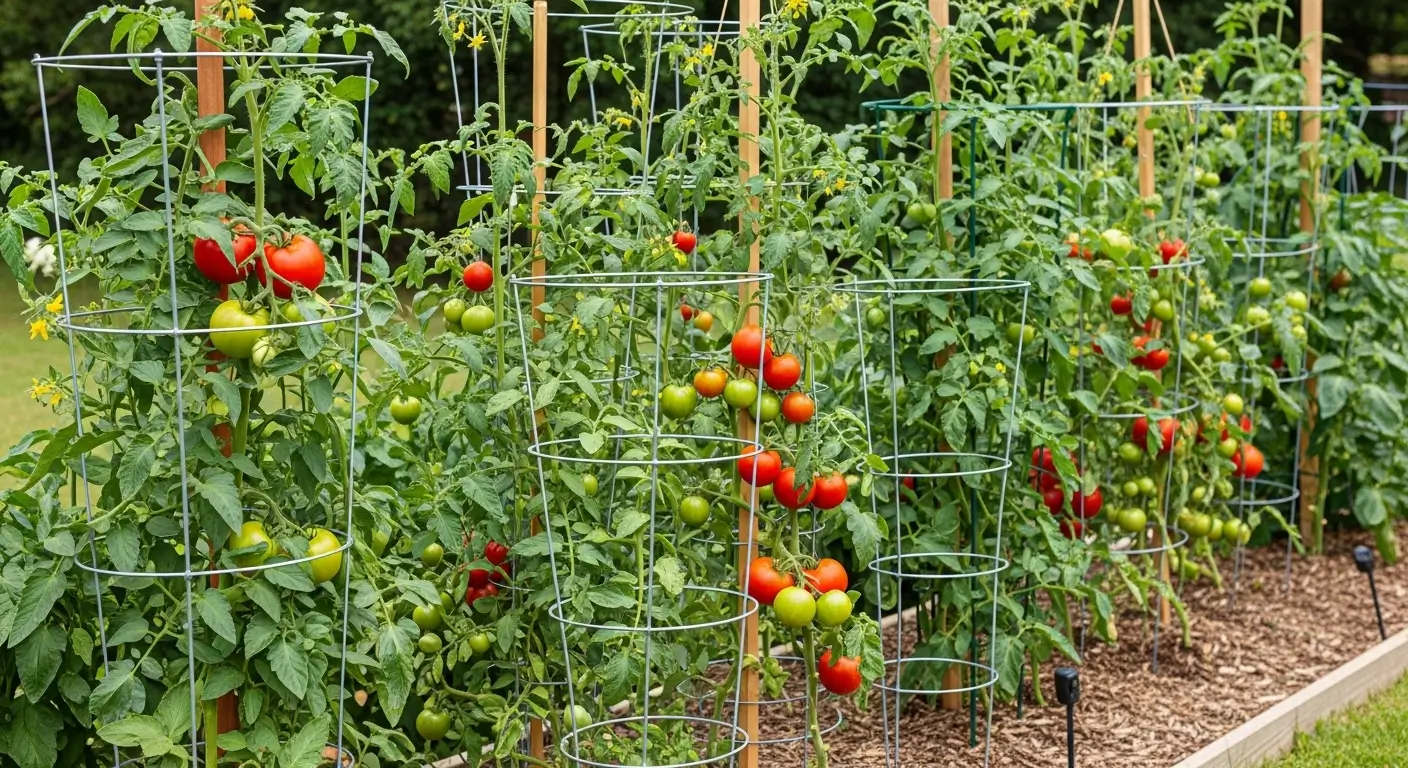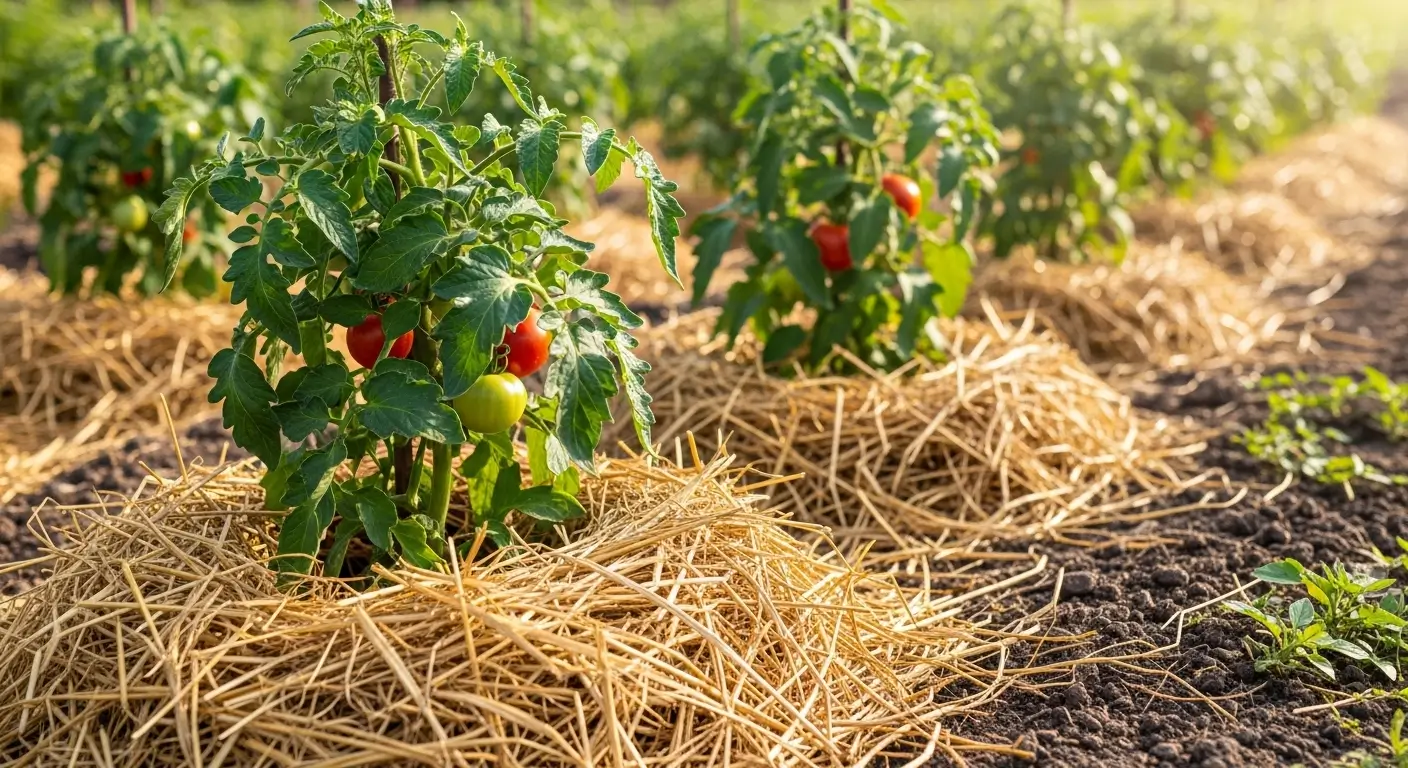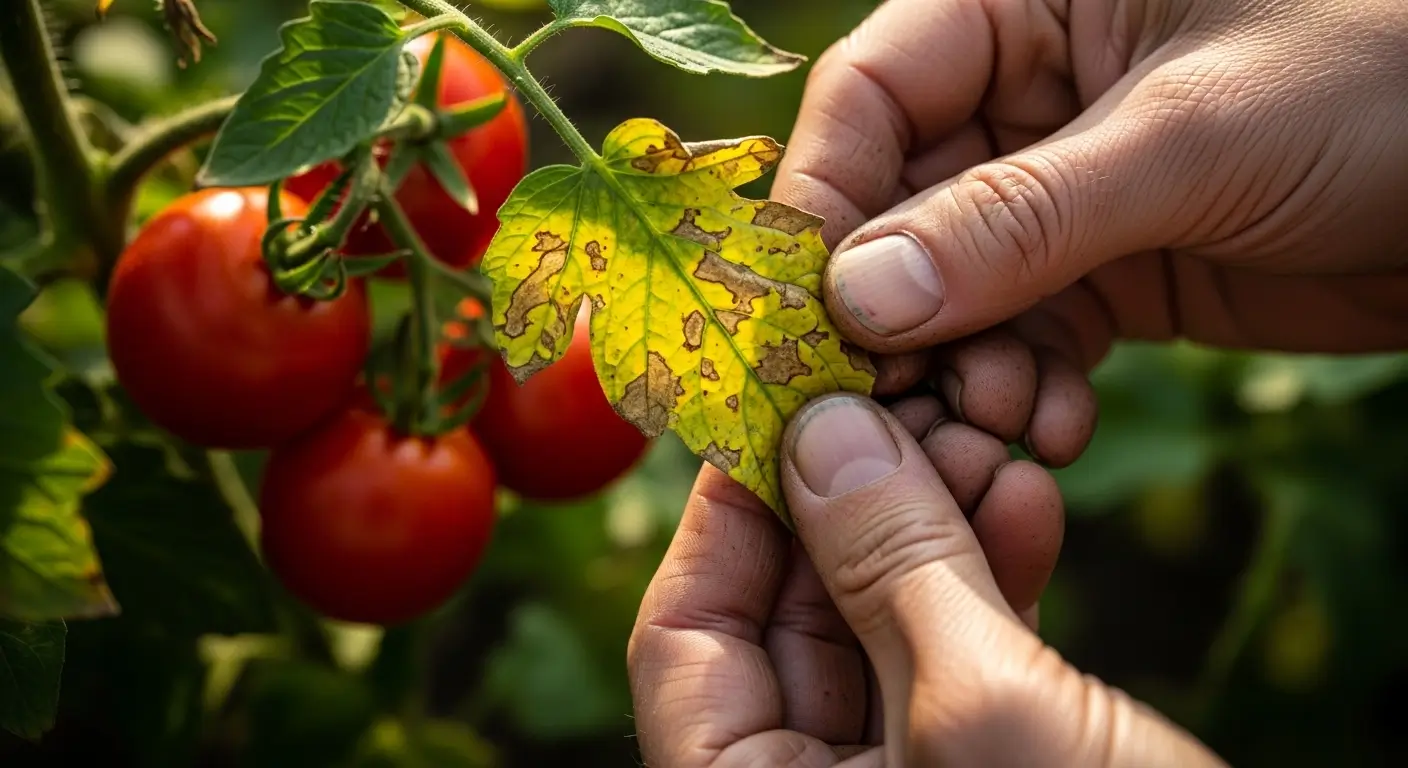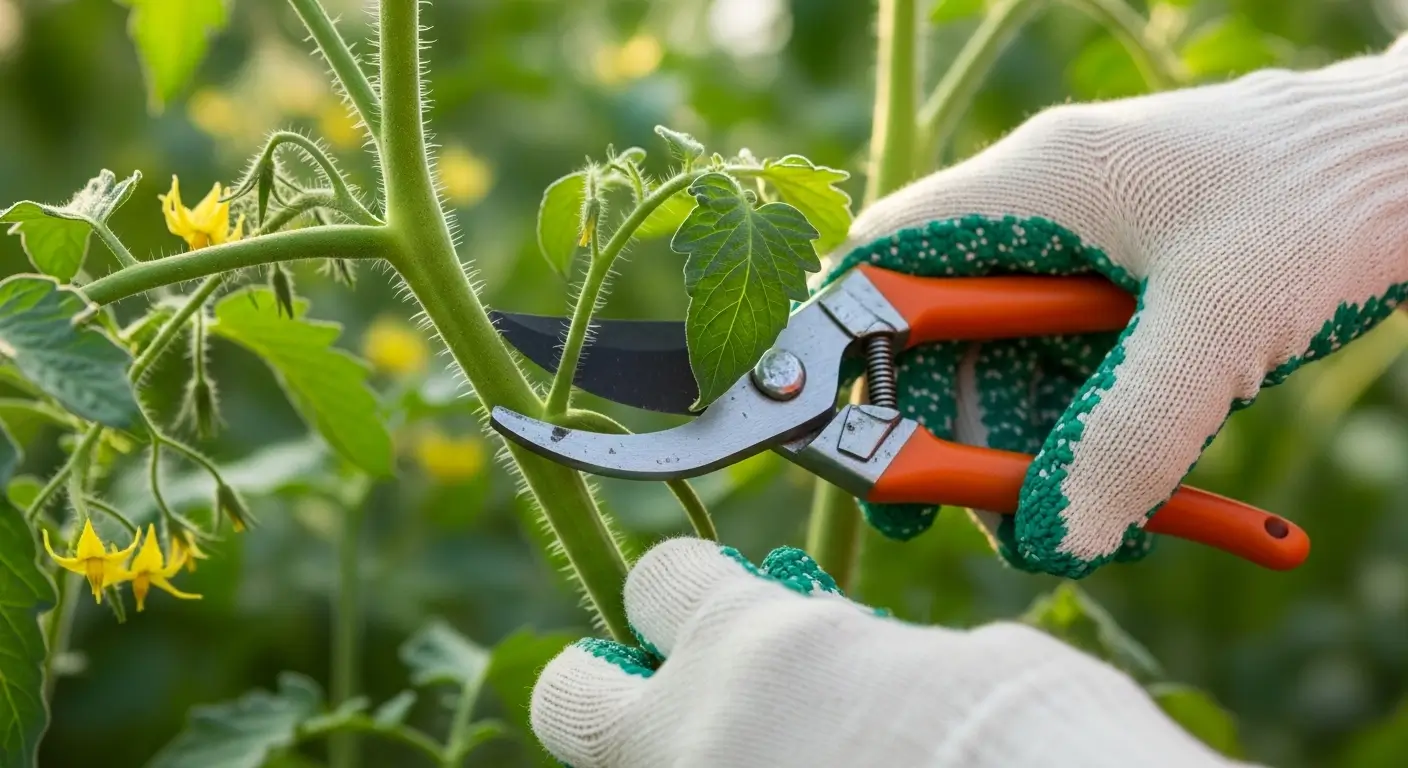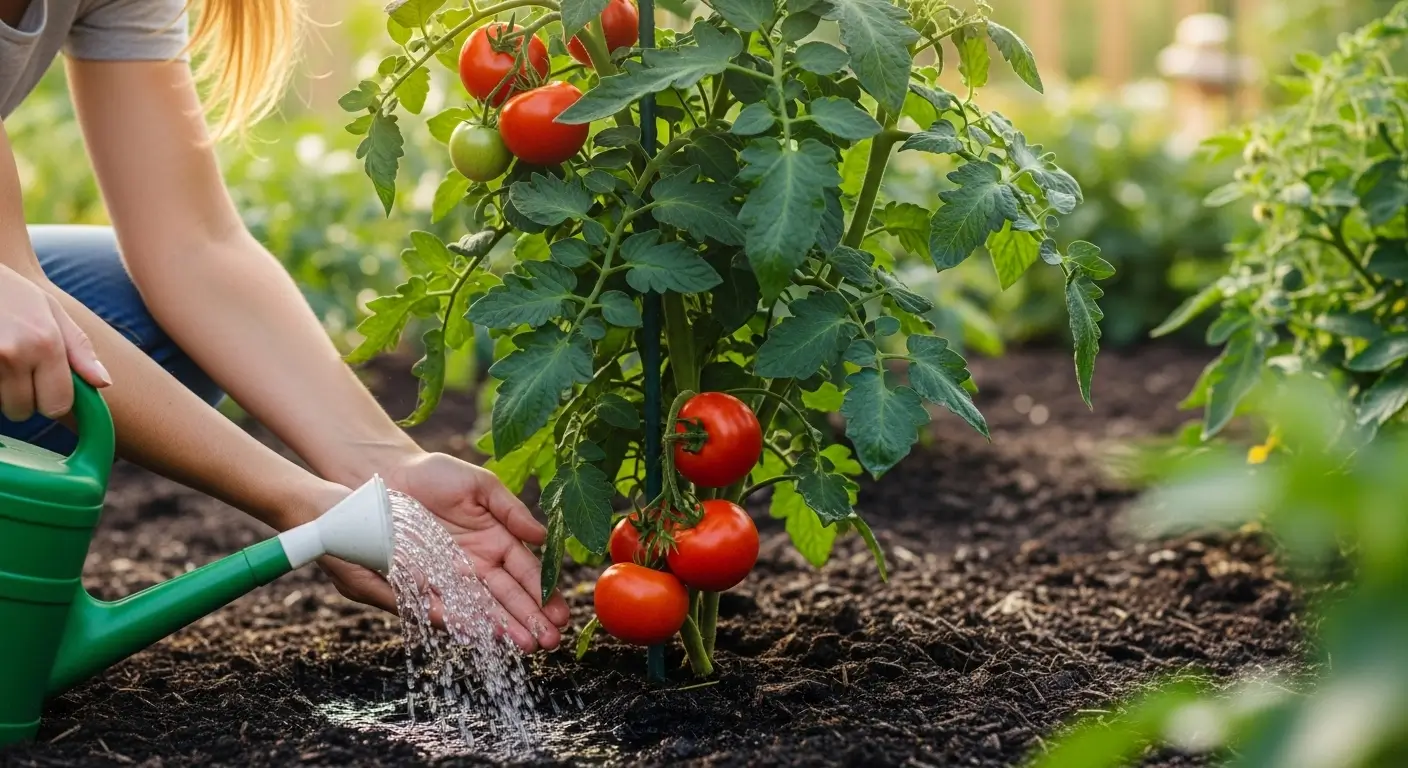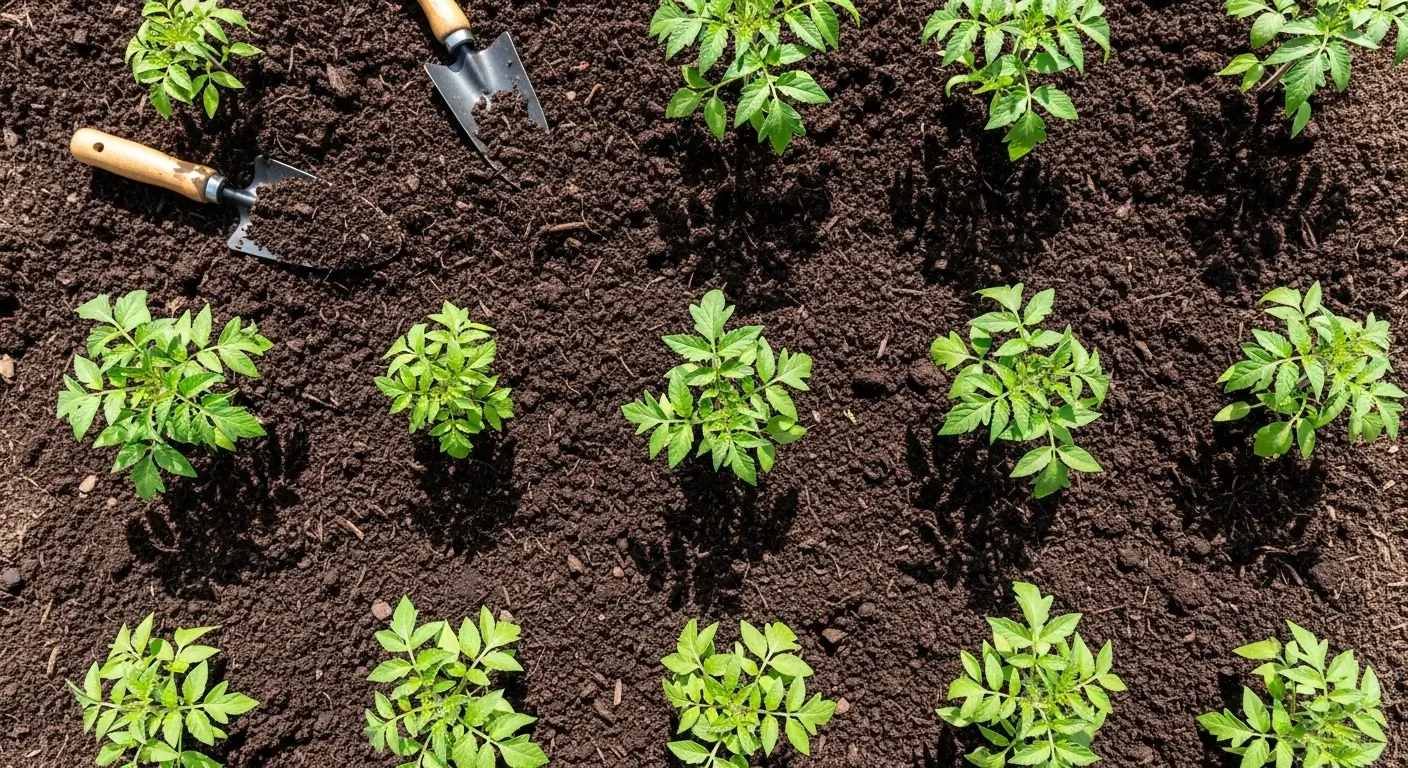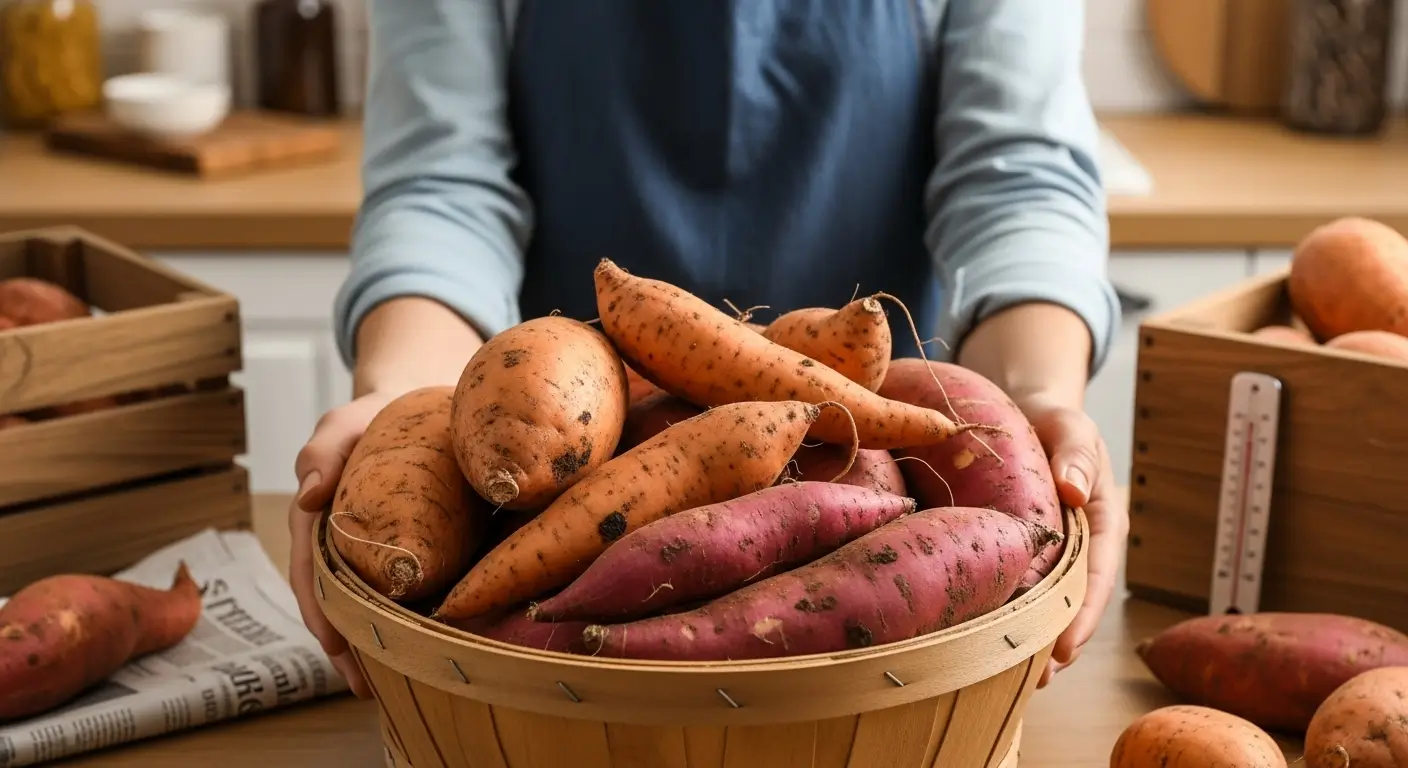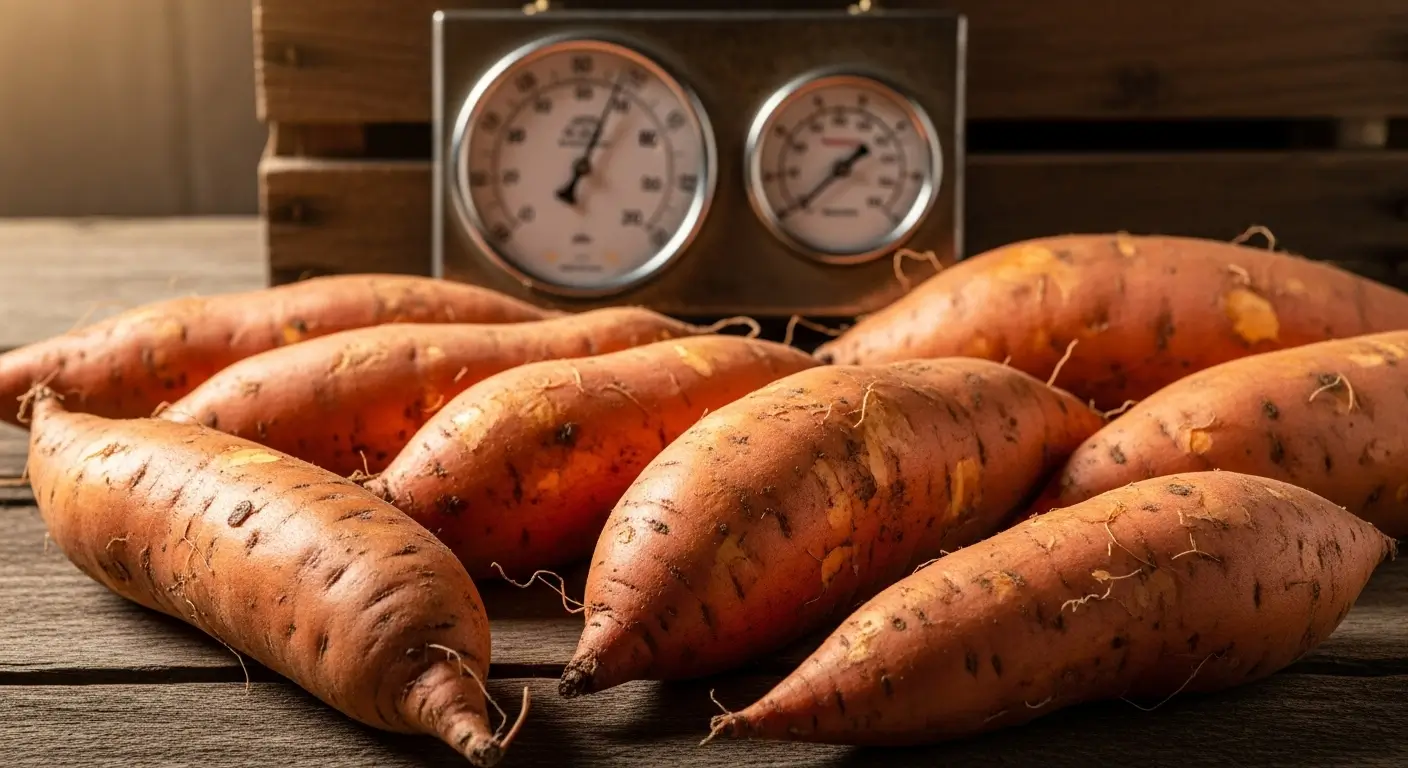Fertilizing tomato plants properly is the secret to getting those perfect, sun-warmed tomatoes that make you think “I did that!” There’s honestly nothing that beats a homegrown tomato – those sad grocery store ones can’t compete. But here’s the real talk: getting those Instagram-worthy tomatoes isn’t just about throwing some seeds in the ground and crossing your fingers.
I’ve been messing around with tomatoes for fifteen years now here in Illinois, and let me tell you – I’ve killed my fair share of plants learning this stuff! When I started, I thought fertilizer was like… well, plant food is plant food, right? Wrong! So very, very wrong.
I’d grab whatever was cheap at the store and wonder why my tomato plants either turned into these crazy jungle monsters with barely any tomatoes, or they’d start off looking amazing and then… give up halfway through summer. Sound familiar? Yeah, I thought so.
The thing is, feeding tomatoes is kinda like feeding teenagers – they’re always hungry, they go through growth spurts, and what they need changes as they get older. Today, I will share everything I wish someone had told me when I was starting out, including how to pick the best fertilizer for tomatoes and set up a tomato feeding schedule that won’t leave you scratching your head.
Table of Contents
Understanding What Makes Tomato Plants Hungry
Here’s the deal – tomatoes are basically the overachievers of the vegetable world. Think of them as friends who run marathons, work two jobs, and somehow still have the energy to binge-watch Netflix shows. They’re growing like crazy, pumping out fruit for months, and burning through nutrients faster than you can say “caprese salad.”
Unlike those easy-going crops like lettuce (plant it, pick it, done!), tomatoes are in your garden for the long haul. And trust me, they’ll let you know if you’re not keeping up with their demands.
What I’ve noticed over the years is that tomato plants go through these pretty obvious phases. First, they’re all about building those roots and strengthening their stems– like plant puberty. Then they start getting all flirty with flowers, which leads to the magical fruit-making stage. After that, it’s just pure tomato factory mode until Jack Frost attends the party.
Each phase needs different stuff; this is where I used to mess up big time. I’d feed them the same thing all season long and wonder why things went sideways.
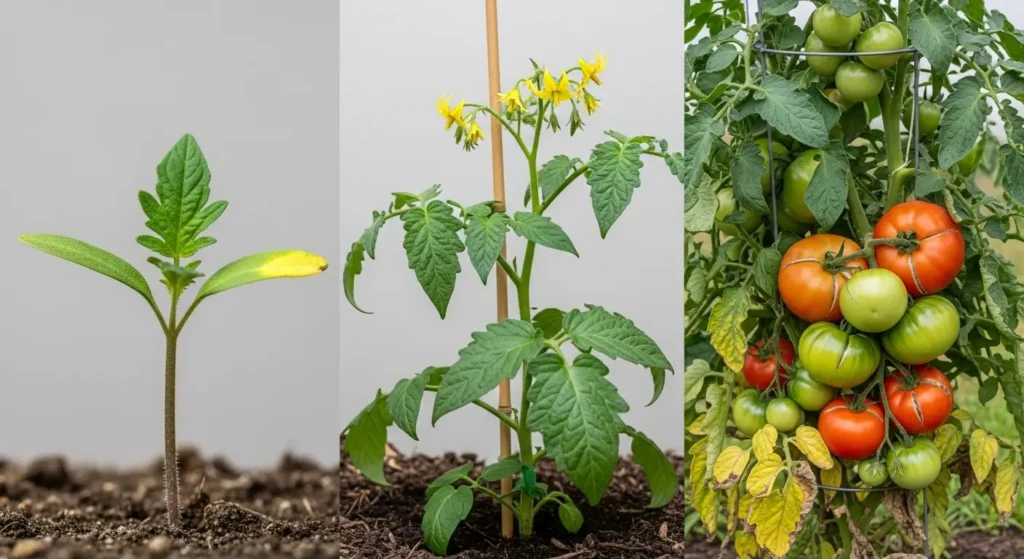
The Science Behind Tomato Nutrition (Don’t Worry, I’ll Keep It Simple!)
Okay, don’t worry – I’m not gonna get all science-y on you, but understanding this stuff will seriously change your tomato game. It’s actually pretty simple once you get it.
So there are three main things tomatoes need: nitrogen (that’s the N on fertilizer packages), phosphorus (the P), and potassium (the K). Think of it like this:
Nitrogen is like plant protein – it makes everything green and leafy. Not enough? Your plants look pale and sad. Too much? You get these monster plants that are all leaves with no action. I learned this the hard way when my tomatoes looked like they belonged in a jungle, but gave me maybe five tomatoes all season.
Phosphorus is your flower and fruit maker. This stuff is crucial for getting those yellow flowers to actually turn into tomatoes instead of just dropping off (which is super frustrating, by the way).
Potassium is the secret sauce for good-tasting tomatoes. It helps with disease resistance too, which is always a bonus.
Here’s the kicker, though – what they need changes throughout the season. Early on, they want a bit more nitrogen to get growing. Once they start flowering, dial back the nitrogen and pump the phosphorus and potassium. During tomato production time, keep that potassium coming!
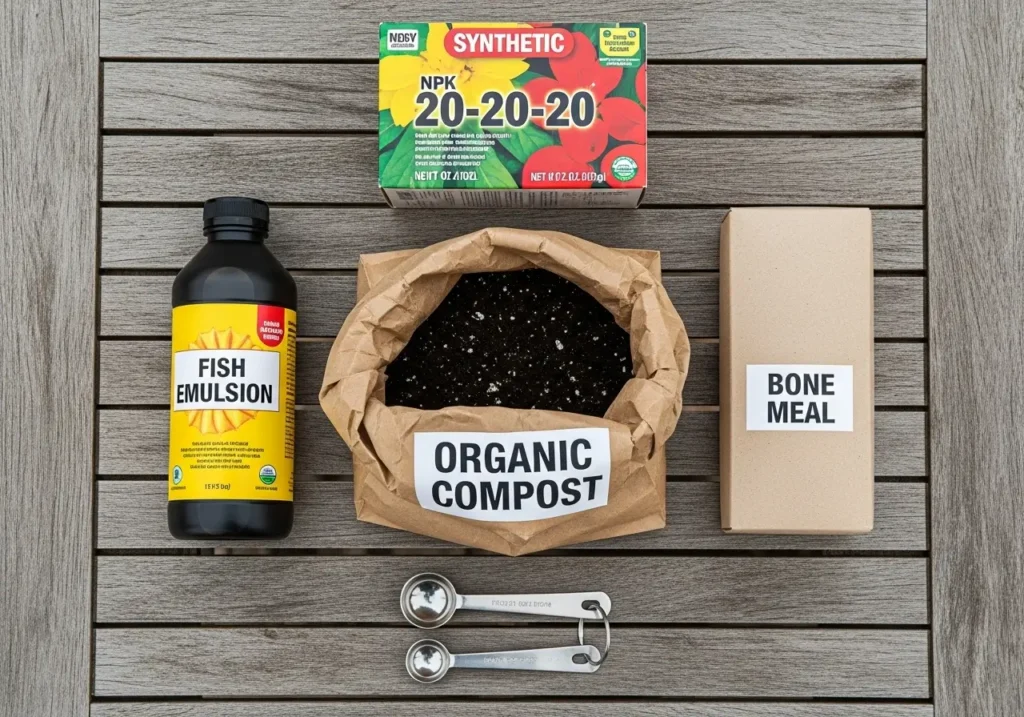
Choosing the Best Fertilizer for Tomatoes: My Real-World Testing
I’ve tried everything short of singing lullabies to my plants (though honestly, I’ve considered it). Here’s what actually works without breaking the bank or driving you crazy:
Organic Tomato Fertilizers (My Personal Favorites)
Fish emulsion is my ride-or-die starter fertilizer. Yeah, it smells like a fish market on a hot day, but your tomatoes will absolutely love you for it. I just cut the recommended dose in half and feed them every few weeks when they’re little. Pro tip: don’t apply it right before having people over for dinner – learned that one the hard way!
Compost and worm castings are like giving your plants an excellent multivitamin. I dump a few inches of compost around the base before planting, then add worm castings about once a month. It’s super low-key but makes a huge difference.
Bone meal goes right in the planting hole – maybe a tablespoon per plant. It’s like giving them a phosphorus head start, which pays off big time when flowering starts.
The USDA provides official standards and information about organic growing practices and certified organic fertilizers.
Synthetic Options That Actually Work
Look, I’m mostly an organic gardener, but I’m not gonna be all snooty about it. Sometimes the synthetic stuff makes sense, especially if you’re growing in containers or dealing with stubborn soil.
For synthetic fertilizers, I look for those numbers on the package. In the early season, something like 10-10-10 works great. Once they flower, I switch to something with less nitrogen – maybe 5-10-10. The idea is to match what the plants need instead of feeding them whatever.
What About Those “Tomato-Specific” Fertilizers?
Some are legit, others are just regular fertilizer in a fancy package with a tomato picture. The good ones are actually formulated for how tomatoes grow, but honestly? You can do just fine with basic fertilizers if you know when to use what.
Creating Your Tomato Feeding Schedule: A Season-Long Approach
This is where it gets fun – timing everything just right so your plants get what they need when needed. Here’s what I do, and it’s worked pretty well for me:
Pre-Planting Preparation
About two weeks before transplanting my babies outside, I work some compost and a balanced organic fertilizer into the soil. This gives everything time to settle in. I also toss some bone meal in each planting hole because, why not give them a good start?
Weeks 1-4: The Establishment Phase
These little guys are just trying to figure out their new home, so I go easy on them. Fish emulsion every two weeks, but I water it to half-strength. They’re putting all their energy into roots right now, so they don’t need me going crazy with the fertilizer.
Weeks 5-8: Pre-Flowering Boost
This is when I start getting more serious. Still doing the fish emulsion thing, but I also add some compost around each plant. If I’m using synthetic stuff, I suggest switching to something with more phosphorus to prep for flower time.
Weeks 9-12: Flowering and Fruit Set
Game on! This is when all that prep work pays off. I back off the nitrogen (don’t want leafy monsters) and focus on phosphorus and potassium. Weekly feeding with lower-nitrogen fertilizer, plus I spray the leaves with liquid kelp because tomatoes love that potassium boost.
Mid-Season Through Harvest
From here until frost kills the party, it’s all about keeping things steady. I feed every 2-3 weeks with a balanced approach, but I mostly watch how the plants do and adjust accordingly.
Before diving into the week-by-week details, I created this handy calculator to give you personalized recommendations based on your specific situation. Just plug in your info and get a custom feeding plan – it’s like having me right there in your garden!
🍅 Tomato Feeding Calculator
Get personalized fertilizing recommendations for your tomato plants!
Pretty cool, right? Now let me break down exactly what’s happening during each phase so you understand the “why” behind these recommendations.
Reading Your Plants: Signs They’re Hungry (Or Overfed!)
After doing this, I can tell what my plants need by looking at them. It’s like plant whispering, but way less mystical and more “oh crap, I forgot to feed them.”
Yellow lower leaves usually mean they need nitrogen, but here’s the tricky part – sometimes older leaves just naturally yellow as the plant focuses on making fruit. It’s like plant aging, and totally normal.
Purple-ish stems or leaves often need phosphorus. I see this more when it’s cool or my soil pH is weird.
Leaves curling up or getting brown edges can mean they need potassium. Still, it also means I’ve been inconsistent with watering (which affects how they absorb nutrients anyway).
Huge plants with barely any flowers? Yep, I overdid the nitrogen. I call these my “bodybuilder plants” – all show, no go.
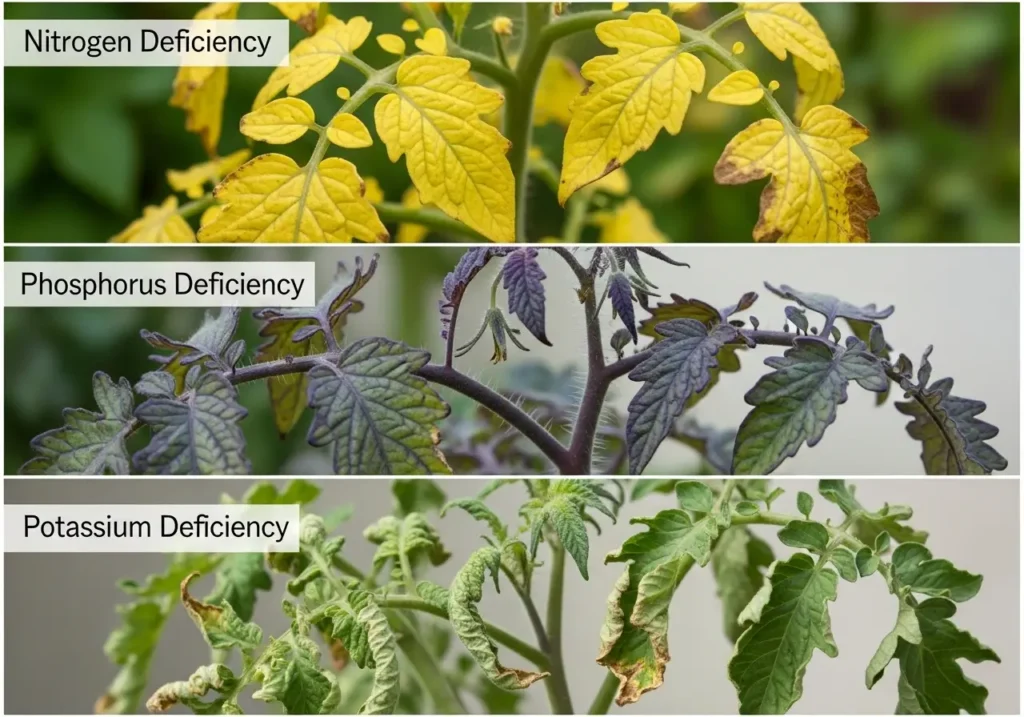
The trick is looking at the whole plant, not just freaking out over one yellow leaf. And honestly, having good soil (check out my guide to the best soil for tomatoes if you want the full scoop) makes everything else easier.
Common Fertilizing Tomato Plants Mistakes (That I’ve Definitely Made)
Let me save you from some face-palm moments:
Mistake #1: The “More is Better” Disaster. I once thought, “If a little is good, a lot must be amazing!” and tripled the fertilizer. Spoiler alert: it wasn’t amazing. It was expensive, my plants were stressed out, and I poisoned my soil. Just follow the directions, people!
Mistake #2: Ignoring the Calcium Thing. Blossom end rot (those gross black spots on the bottom of tomatoes) had me adding calcium like crazy until I learned it’s usually a watering problem, not a calcium problem. Consistent watering fixes it way better than more fertilizer.
Mistake #3: Fertilizing Bone-Dry Plants. Always water first, then fertilize. I learned this after basically giving several plants chemical burns. Not my proudest gardening moment.
Mistake #4: Treating Container Plants Like Garden Plants. Container tomatoes are needy – they need way more frequent feeding because every time you water, you’re washing nutrients away. What works for in-ground plants will leave container plants hangry.
Advanced Tips for Tomato Feeding Success
Okay, so you’ve got the basics down and want to get fancy? Here are some tricks I’ve picked up:
Foliar Feeding for Quick Fixes
When plants look stressed or show deficiency signs, I mix up some weak liquid fertilizer and spray it on the leaves. It’s like an IV drip for plants – they can absorb nutrients through their leaves way faster than through roots. Just do it early in the morning or evening so you don’t fry them.
The Deep Watering Connection
Here’s something most people don’t think about: fertilizer only works if plants can actually use it. Deep, less frequent watering grows roots down where the good stuff is. Shallow, frequent watering keeps roots near the surface where nutrients wash away. It’s like training your plants to be self-sufficient.
Companion Planting for Natural Help
I plant basil around my tomatoes because they taste amazing together, but basil also helps improve soil health. Marigolds are great too – when they die back, they add organic matter to the soil.
Timing Everything Together
I coordinate my feeding with other tomato maintenance. When I’m pruning tomato plants, I check for any signs they need feeding. It’s just efficient, and I’m already out there getting my hands dirty anyway.
Troubleshooting Common Feeding Problems
Even when you think you’re doing everything right, stuff happens. Here’s how I deal with the most common headaches:
Problem: Plants are growing super slowly despite regular feeding. The first thing I check is soil pH. Tomatoes like it between 6.0 and 6.8; if it’s off, they can’t absorb nutrients even if you’re drowning them in fertilizer. I learned this when half my garden was thriving and the other half looked pathetic – turns out that section had leftover lime from construction work.
Problem: Amazing growth but no flowers. Too much nitrogen, guaranteed. Stop feeding for a few weeks and see if flowers show up. If they do, switch to something with way less nitrogen going forward.
Problem: Flowers keep dropping off. Sometimes it’s just too hot or cold, but not enough phosphorus makes it worse. I add some bone meal around the plants and make sure I’m watering consistently.
Creating Your Personal Tomato Success Story
I know this probably seems like a lot if you’re starting. But honestly? You don’t need to be perfect right out of the gate. I’ve been doing this for fifteen years, and I’m still learning new stuff every season – that’s half the fun!
Start with decent soil prep – seriously, this is where most of your success comes from. If you’re new to tomato growing, check out my complete guide to growing tomatoes for the whole picture.
Focus on consistent, reasonable feeding rather than trying to do every fancy technique I mentioned. As you get more comfortable and confident, you can experiment with different approaches and determine what works best in your garden.
Key Takeaways for Fertilizing Success
Before you rush out to your garden, here’s what you really need to remember:
- Feed them what they need when they need it: nitrogen early on, phosphorus for flowers, potassium for fruit production
- Steady wins the race: regular, moderate feeding beats sporadic heavy feeding every time
- Soil health is everything: good drainage, correct pH, and organic matter matter way more than expensive fertilizers
- Your plants will tell you what’s up: you gotta know how to listen
- Container plants are needier: they need more frequent feeding because nutrients wash away faster
Every garden’s different, and what works great for me here in Illinois might need some tweaking for your situation. The key is starting with these basic principles and adjusting as you go.
Your tomatoes are depending on you to keep them happy and well-fed all season long. With the right approach to fertilizing tomato plants, you will be blown away by how much better your harvest can be. Trust me – once you taste an ideally grown, homegrown tomato, you’ll wonder why you ever bothered with those cardboard grocery store ones.
What’s your biggest struggle with feeding tomatoes? Drop me a comment below – I love helping fellow gardeners figure this stuff out! We’re all just winging it and learning together.
Fertilizing Tomato Plants – Frequently Asked Questions
How often should I fertilize my tomato plants?
The frequency of fertilizing tomato plants depends on their growth stage. During the establishment phase (weeks 1-4), fertilize every 2 weeks with diluted fertilizer. Once flowering begins (weeks 9-12), increase to weekly feeding. During the fruiting stage, fertilize every 7-10 days. Container-grown tomatoes need more frequent feeding since nutrients wash out faster with watering.
What is the best fertilizer for tomato plants?
The best fertilizer for tomatoes changes throughout the season. Early growth benefits from balanced fertilizers like 10-10-10. During flowering, switch to lower nitrogen options like 5-10-10 to encourage blooms. For fruiting, use fertilizers high in potassium like 4-6-12. Organic options include fish emulsion, compost, and bone meal, while synthetic water-soluble fertilizers work well for quick nutrient delivery.
What are the signs that my tomato plants need fertilizer?
Common signs your tomato plants need fertilizing include yellowing lower leaves (nitrogen deficiency), purple stems or leaves (phosphorus deficiency), and leaf curling with brown edges (potassium deficiency). Slow growth, poor flowering, or pale green foliage also indicate nutrient needs. However, always check soil moisture first, as inconsistent watering can mimic fertilizer deficiency symptoms.
